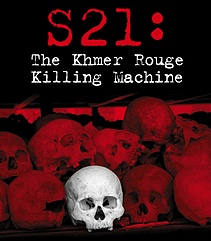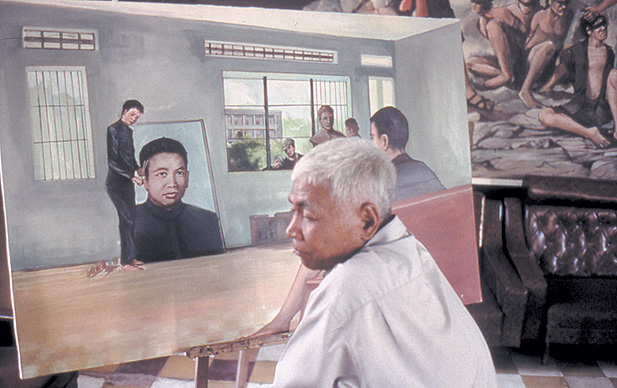S21: THE KILLING MACHINE OF THE KHUMER
ROUGE
by JÜRGEN FAUTH
Jürgen
Fauth is a writer and film critic from Wiesbaden, Germany. He
writes about film at
World / Independent where this
review first appeared.
 In
S21: The Killing Machine of the Khumer Rouge, Cambodian
filmmaker Rithy Panh's brings together the victims and perpetrators
of Pol Pot's genocide in a devastating documentary. Under the
Khmer Rouge, approximately 1.7 million people lost their lives
between 1975 and 1979; S21 is the name of one of the
'interrogation centers' where only a handful of the 17,000 prisoners
survived.
In
S21: The Killing Machine of the Khumer Rouge, Cambodian
filmmaker Rithy Panh's brings together the victims and perpetrators
of Pol Pot's genocide in a devastating documentary. Under the
Khmer Rouge, approximately 1.7 million people lost their lives
between 1975 and 1979; S21 is the name of one of the
'interrogation centers' where only a handful of the 17,000 prisoners
survived.
What
makes S21 uniquely powerful among human-rights documentaries
is that Rithy Panh managed to bring victims and perpetrators face-to-face.
Imagine a holocaust film in which Waffen SS or concentration camp
guards talk to survivors or describe their daily routines for
the camera. The result is a breathtaking look into the malleability
of the human animal and its capacity for evil. It is also a very
concrete account of what happened at S21, also known
as konlaenh choul min dael chenh: "the place where
people go in but never come out."
Panh
takes painstaking care to observe the smallest of details. He
follows Vann Nath, who survived S21 as party painter,
through the abandoned complex as he sifts through the remaining
stacks of the bureaucracy that always seem to accompany cruelty
on a national scale: regulations for the guards, lists of the
denounced, photos of the tortured, and the coerced confessions
forced out of the innocent. The bland bookkeeping tells stories
of unimaginable terror and pain.
Amazingly, Panh also brought the former guards back to S21.
 When
survivor Vann Nath comes face-to-face with his jailers, his calm
but determined questions meet with vacant faces: the extent of
the perpetrator's guilt is staggering, and so is their capacity
for self-deception. The torturers and murderers of tens of thousands
appear to have convinced themselves that they, too, are victims.
The last defence of the henchmen of genocide is familiar: "I
was only following orders."
When
survivor Vann Nath comes face-to-face with his jailers, his calm
but determined questions meet with vacant faces: the extent of
the perpetrator's guilt is staggering, and so is their capacity
for self-deception. The torturers and murderers of tens of thousands
appear to have convinced themselves that they, too, are victims.
The last defence of the henchmen of genocide is familiar: "I
was only following orders."
The
most stunning scenes of the film involve the guards re-enacting
their past. With mechanical voices, the men (mere boys at the
time) walk through the cells and shout abuse at the long-gone
prisoners in strangely mechanical, hollow voices. In the sickening
finale, they describe how they took prisoners away to the mass
graves and re-enact their executions by club and knife. It is
like watching the ghosts of past evil become flesh for the camera.
--Best
Director and Václav Havel Awards, 2004 One World Human
Rights Film Festival
--François Chalais Prize, 2003 Cannes Film Festival
--Grand Jury Prize, 2003 Copenhagen Film Festival